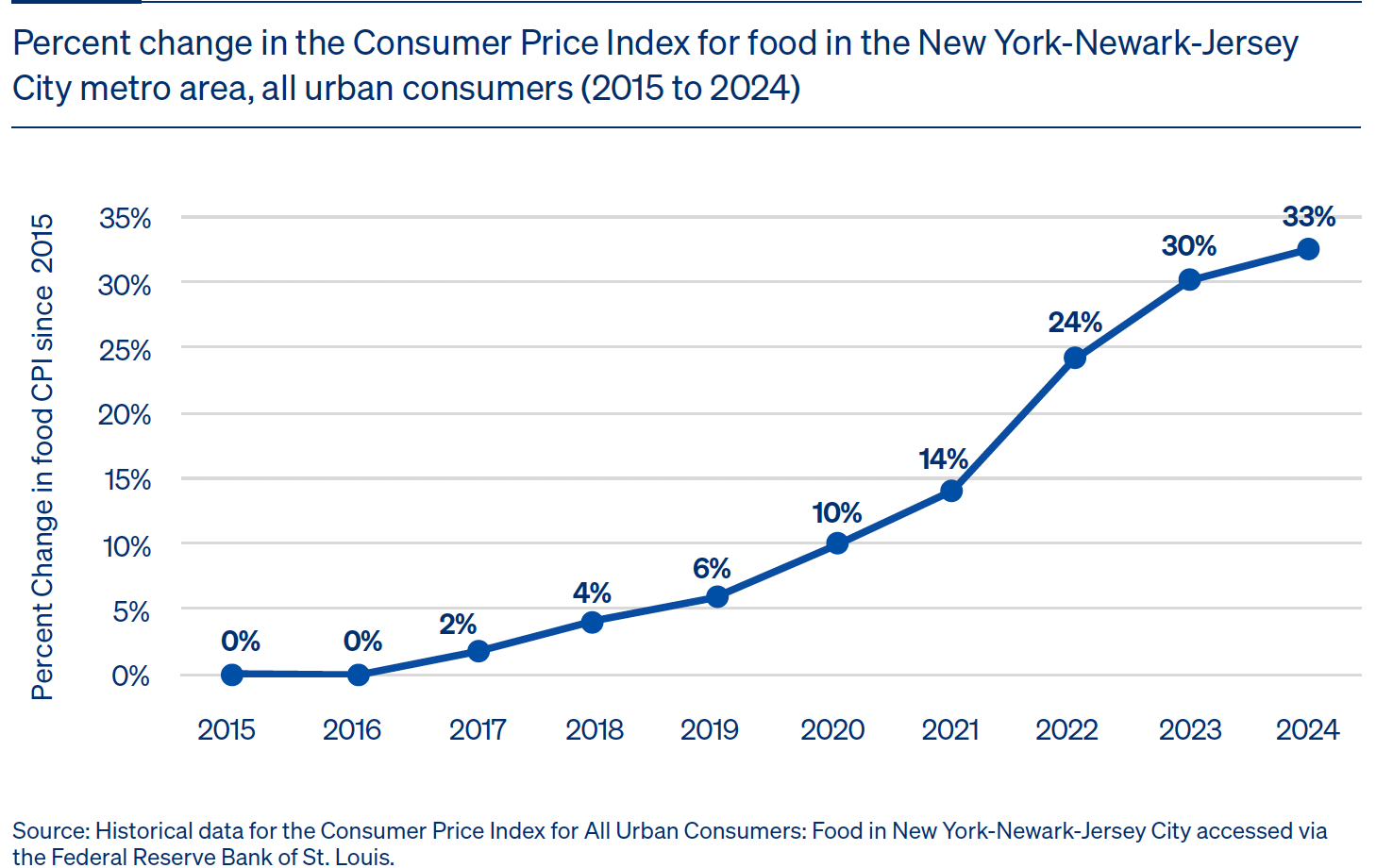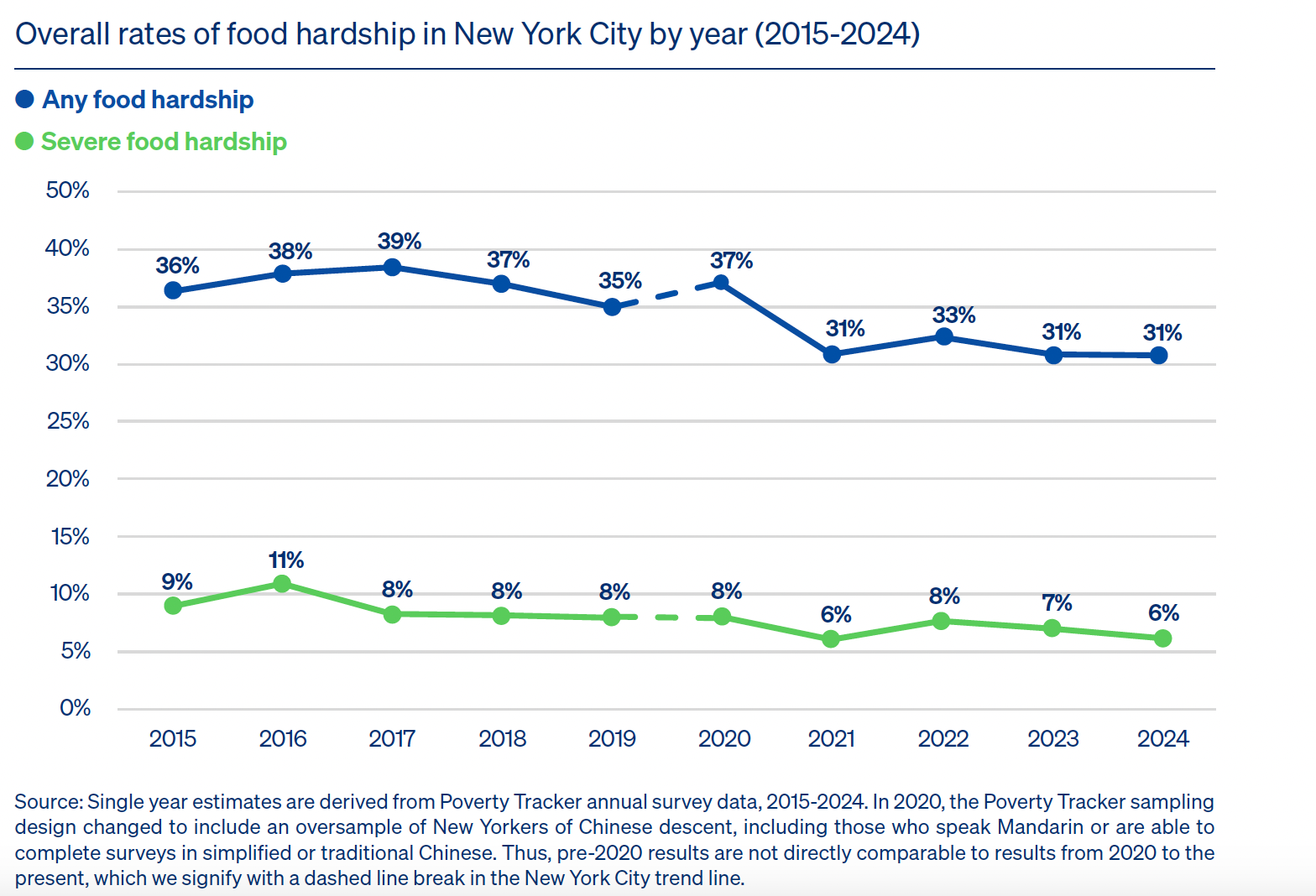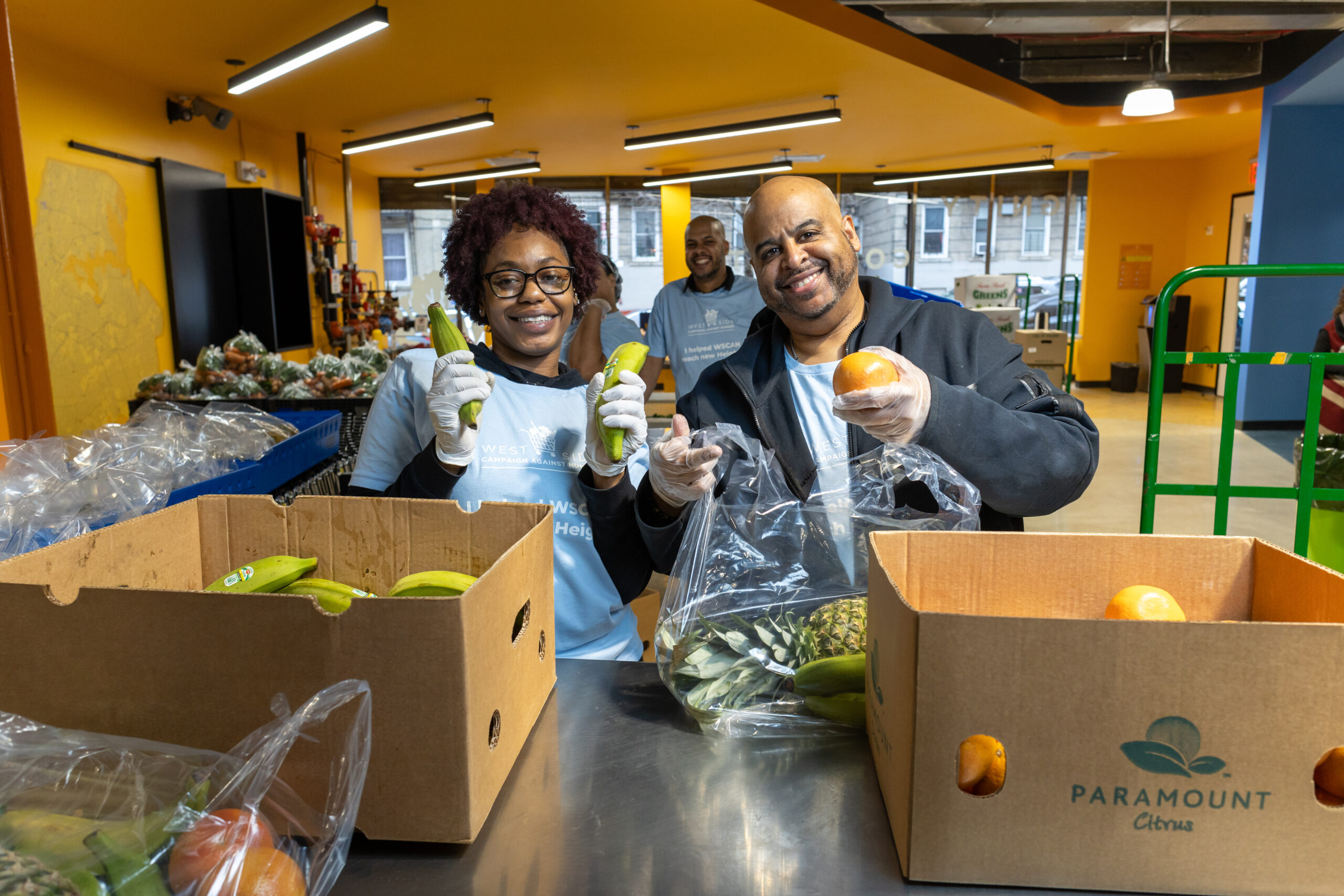November 2025
Spotlight on: Food Budget Shortfalls in New York City
More than 40% of New York City families cannot afford weekly food costs, falling short $205 per week
Contributors: Ryan Vinh, Sophie Collyer, Yajun Jia, Vicki Lens, Schuyler Ross, Traci Schwinn, Christopher Wimer, and Christopher Yera
Issues Areas: Food Hardship
Each year, prior to Thanksgiving, Robin Hood and researchers at Columbia University’s School of Social Work publish a spotlight report on food hardship and assistance. The report draws on the latest data from Robin Hood’s Poverty Tracker, a longitudinal study of poverty and well-being, and presents the latest estimates of the prevalence of food hardship, defined as sometimes or often running out of food or worrying that food will run out before having money to buy more.
The report shows that more than one in three adult New Yorkers (36%) and more than 40% of families with children (42%) reported needing more money to meet their household food needs in recent years – a substantial increase from the pre-pandemic period when these rates stood at 29% and 34%, respectively. This represents nearly 440,000 additional adults and more than 70,000 additional families with children experiencing food budget shortfalls across the income distribution.
New Yorkers’ ability to afford food has been impacted by rising prices, with food costs in the New York City metropolitan area increasing by 33% over the last decade. The report finds that food budget shortfalls are affecting New Yorkers across the income distribution, including those well above the poverty line. Among families with children facing food budget shortfalls, the average amount of additional money needed per week has increased from $171 pre-pandemic to $205 in recent years.
The findings reveal that food insecurity is not limited to those living in poverty. The share of adults experiencing food budget shortfalls increased across all income groups, including a jump from 13% to 20% among New Yorkers earning above 300% of the poverty line. For families with children living below 200% of the poverty line, food budget shortfalls increased to 47%, while families above 200% of the poverty line saw rates rise from 25% to 34%.
1 in 3
adult New Yorkers and 40% of families do not have enough money to feed their household
33
%
increase of food costs in the New York City metropolitan area over the last decade
$205
the average weekly food budget shortfall for families with children (increased by more than $30 since the pandemic)


Policy Implications and Conclusions
Affording food is a challenge for many New Yorkers, one that has been exacerbated in recent years due to the rising costs of food and other necessities. With more than one in three adults in New York City reporting that they lack the money to buy the food they need, it is clear that more support is needed to ensure the city can be a place where everyone can afford the basics. The fact that these food budget shortfalls extend well above the poverty line points to the wide-ranging impact of rising food prices throughout the city. For groups that experience elevated rates of poverty and hardship, such as foreign-born New Yorkers and communities of color, being unable to afford food continues to be the ever-present reality for far too many.
Poverty Tracker research has shown that stable access to affordable, healthy, and nutritious food remains out of reach for many families in the city. While food pantries and government programs like SNAP can reduce barriers to meeting food needs, rising prices in recent years, as well as looming cuts at the federal level, are likely to exacerbate food hardship in the near future.
Related Reports
Explore recent podcasts and research on food insecurity and hunger in New York City.
